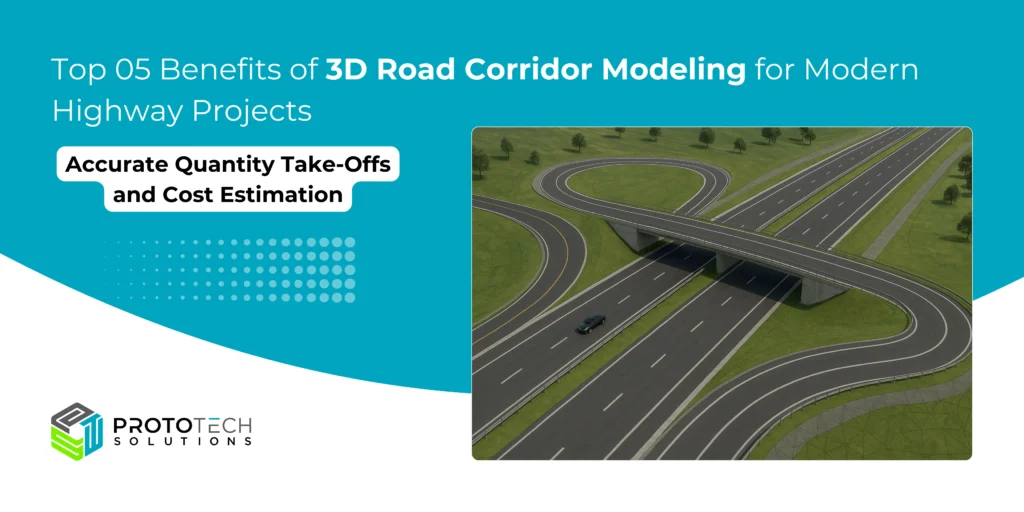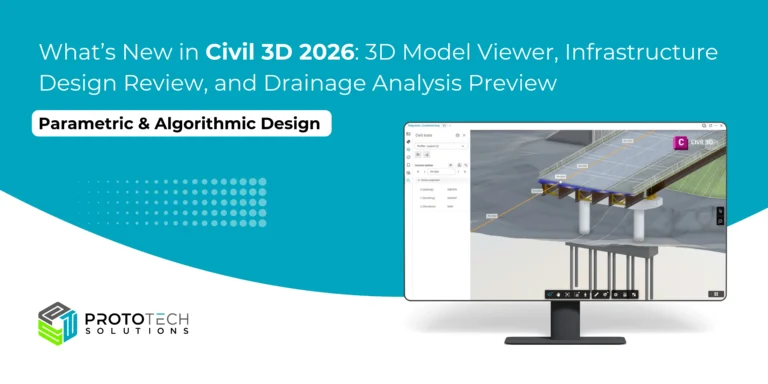Top 05 Benefits of 3D Road Corridor Modeling for Modern Highway Projects

The global highway construction market is poised for significant expansion, anticipated to increase from a substantial $2.6 trillion in 2024 to an impressive $3.7 trillion by the year 2030. This remarkable growth, characterized by a compound annual growth rate (CAGR) of 5.9%, is largely fueled by several key factors. Rising urbanization is pressuring infrastructure development to accommodate growing populations, while substantial government investments in public works are revitalizing and modernizing transportation networks. Additionally, the increasing integration of smart technologies in construction processes is enhancing efficiency and safety, further driving demand in this dynamic sector.
Highway design and construction have advanced rapidly with the integration of digital tools that improve accuracy, speed, and collaboration. One of the most impactful technologies being adopted today is 3D Corridor Modeling Services, which allows engineers and planners to visualize, simulate, and optimize road infrastructure before it is built. From design conceptualization to construction execution, this digital method brings clarity and confidence to complex highway projects, reducing risks and ensuring better outcomes.
In this article, we’ll explore the top five benefits of using 3D road corridor modeling in modern highway projects and how it is transforming the way infrastructure is designed, planned, and delivered.
1. Enhanced Visualization and Design Accuracy
One of the greatest challenges in highway design is effectively communicating the vision of a project. Traditional 2D drawings often fall short in helping stakeholders visualize the outcome. With 3D corridor modeling, engineers can create highly detailed, real-world simulations of road alignments, cross-sections, grading, and terrain.
This enhanced visualization provides:
- A clearer understanding for project owners and stakeholders.
- Early identification of potential conflicts with terrain, utilities, or existing infrastructure.
- Improved collaboration among engineers, contractors, and decision-makers.
By reducing ambiguities, 3D corridor modeling ensures design accuracy, minimizes misinterpretations, and aligns everyone toward a unified project vision.
2. Faster and More Efficient Project Planning
Highway projects often span large geographical areas and involve numerous interdependent elements. Coordinating these details using 2D plans can be slow and prone to errors. 3D corridor modeling accelerates this process by integrating design components into a single, data-rich model.
Benefits include:
- Rapid generation of cross-sections and profiles.
- Seamless integration of horizontal and vertical alignments.
- Automated updates when design modifications are made.
This efficiency reduces the time engineers spend on repetitive drafting tasks, freeing them to focus on design optimization and problem-solving. The result is faster project delivery without compromising quality.
3. Cost Savings Through Error Reduction
Highway construction is costly, and design errors can quickly escalate budgets. Traditional methods often lead to rework due to overlooked design conflicts, such as grading mismatches or utility clashes. With 3D corridor modeling, these issues are detected during the design stage, long before construction begins.
For example:
- Utility conflicts can be identified and resolved early.
- Cut-and-fill quantities can be calculated more accurately, reducing material waste.
- Contractors can better plan construction sequencing, avoiding costly delays.
By minimizing errors and optimizing resource use, highway projects see significant cost savings throughout their lifecycle.
4. Improved Collaboration Across Teams
Modern highway projects involve collaboration among diverse professionals, civil engineers, surveyors, transportation planners, and construction contractors. Traditional 2D drawings often lead to communication gaps. In contrast, 3D corridor models serve as a single source of truth, ensuring everyone works with the same accurate data.
Key advantages include:
- Cloud-based collaboration where teams can access and review models remotely.
- Easier design reviews with realistic visualizations for both technical and non-technical stakeholders.
- Streamlined coordination between design and construction teams.
By fostering better collaboration, 3D corridor modeling reduces delays, prevents miscommunication, and enhances overall project quality.
5. Accurate Quantity Take-Offs and Cost Estimation
A critical part of highway planning is estimating material quantities and project costs. Inaccurate estimates can lead to budget overruns and strained client relationships. With 3D corridor modeling, engineers can generate precise material take-offs directly from the model.
Benefits of model-based take-offs include:
- Detailed calculations for cut-and-fill volumes.
- Accurate quantities for pavement layers, drainage systems, and other road components.
- Integration of cost data with design models for real-time budget forecasting.
These precise estimates not only improve financial planning but also build confidence among project owners and funding agencies.
Read Related:
- The Ultimate Guide to Highway Design: From Planning to Drafting
- How Parametric Modeling Accelerates Road Cross-Section Development
Conclusion
As highway projects grow in scale and complexity, traditional 2D drafting methods are being replaced by more advanced, data-driven solutions. From enhanced visualization to cost savings and improved collaboration, 3D corridor modeling has transformed the way engineers and planners approach modern highway design.
At ProtoTech Solutions, we empower civil engineers, infrastructure planners, and consultants with specialized 3D Corridor Modeling Services tailored for highway projects. Our expertise helps clients unlock higher efficiency, reduce risks, and deliver world-class road infrastructure on time and within budget. By leveraging our expertise, you can unlock the full potential of digital highway design and take your projects to the next level.






